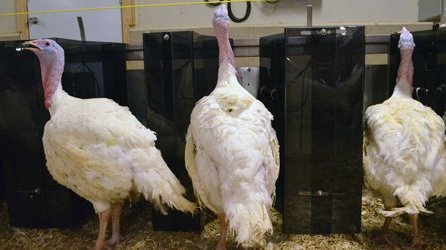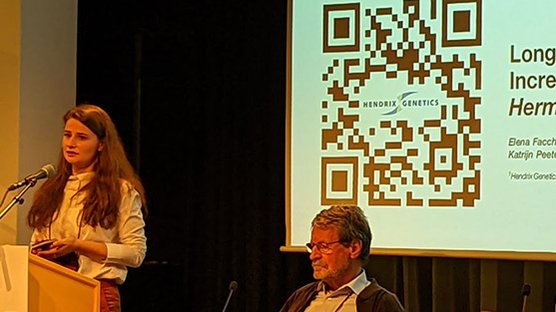
Published on June 28, 2021
How animal genetics can contribute to a healthier planet
In the past, agriculture was focused on feeding the population in the same way it had been done for many years. Consideration of sustainable use of feed, land, and water was not a major priority. However, a transformation is now taking place as more and more people are aware of the strain our planet is under and will continue to grow in the future if we stick with the status quo. Research has shown that it is possible to produce the same amount of food while operating in an environmentally sustainable way.
High quality animal genetics have a key role in contributing to a sustainable food system. At the start of the value chain, we consider economic, social, and environmental sustainability in everything that we do. How is environmental sustainability connected to animal genetics and what are the areas of future opportunity?
Understanding environmental pressures
What kind of planet will we leave for future generations? Is it too late to make a difference? And how can we change our food system to make a positive impact? There are a lot of questions, with no easy solutions. As a first step, our goal is to evaluate and measure the impact we have on our environment. Efficient use of resources, including feed, water land use is part of the equation.
Feed is responsible for 50% to 80% of the environmental footprint of animal protein. In the past, feed conversion was mainly important for reducing the cost of production, but we now know that it also plays a critical role in environmental impact, as well as producing animals with high nutritional value and quality. For all our species, measuring feed conversion is a key component of our breeding program. For example, feed stations have been installed in all our turkey pedigree facilities. This allows us to track individual birds and select those that are most efficient at converting feed.

The feed-food conflict
The feed-food conflict can be boiled down to a simple question: Is it efficient to grow crops to feed animals if it could also be used for human food? Examining this question can help us create a more efficient system to feed the entire world.
Research shows that there are a number of factors that impact whether land use to grow crops for animals is an efficient use of resources. Different factors include, the type of land used to feed animals, what animal it was and whether the animals are able to consume waste products humans cannot consume.
In some cases, crops are a more efficient use of land for the purpose of protein production. However, in other examples, animals are more efficient in using the land to produce protein. For example, raising dairy cows on peat soil is found to be a much more productive use of the land than trying to grow human grade crops on it. Other examples are based on the feed input. Laying hens can utilize nutrients that humans can’t. It all comes down to examination. Without understanding and studying these environmental pressures, we cannot, as a collective, find the most effective methods of producing food.
How do animal genetics factor?
Animal genetics can offer possible solutions to reduce the environmental impact. By examining animal genetics, we can increase an animal’s adaptability for a specific type of diet. If we can adjust an animal’s ability to convert lower emission input diets, such as the use of specific waste streams or food residues, this could make a huge difference in carbon emissions. Not only does this reduce the amount of resources used for feed, but animals could be part of the solution in reducing waste in the food system. Another route to lower emission animals is the selection on animals emitting lower greenhouse gasses. Due to genetic diversity, animals digest their feed differently and this leads to differences in the production of various gasses. Research has focused primarily on ruminants so far as they are responsible for roughly two-thirds of the total GHG emissions of the livestock sectors. Researchers are measuring the total and composition of the gasses individual cows produce and there is clearly a genetic basis of variation in excretion that raises the possibility of reducing manure emissions by breeding for reduced excretion.
Going back to the basics, gradual genetic progress in every new generation has an important impact on saving resources and reducing our carbon footprint. 2% may not seem significant, but 2% more genetic progress in each generation reduces resource use and feeds more of the world’s population. Looking at laying hen genetics, we breed our birds to live longer healthier lives, so they can reach 500 first quality eggs in their lifetime. Gradual genetic progress has made it possible for our laying hens to lay far more eggs now than in 1970.

Environmental balance
As a genetics company, there are several opportunities we can investigate and support. Gradual genetic progress allows us to make an impact on our carbon footprint, but how else can we make the entire system more sustainable?
Application of existing innovation and technologies can increase the availability of food and reduce the environmental footprint of agricultural production. Technology for tracking and tracing such as blockchain has great potential for better use of resources and to build consumer trust. One example is a pilot project we participated in to use blockchain technology for the enhancement of animal welfare in turkeys. Universal application of knowledge and solutions will bring significant gains in output, like crop yields or harvest results, especially for small-scale farmers.
We’ve only just begun examining the pressures of environmental sustainability. To protect the health of our planet and future generations, we will continue to invest in finding efficiencies through high quality animal protein and investigate new opportunities.

